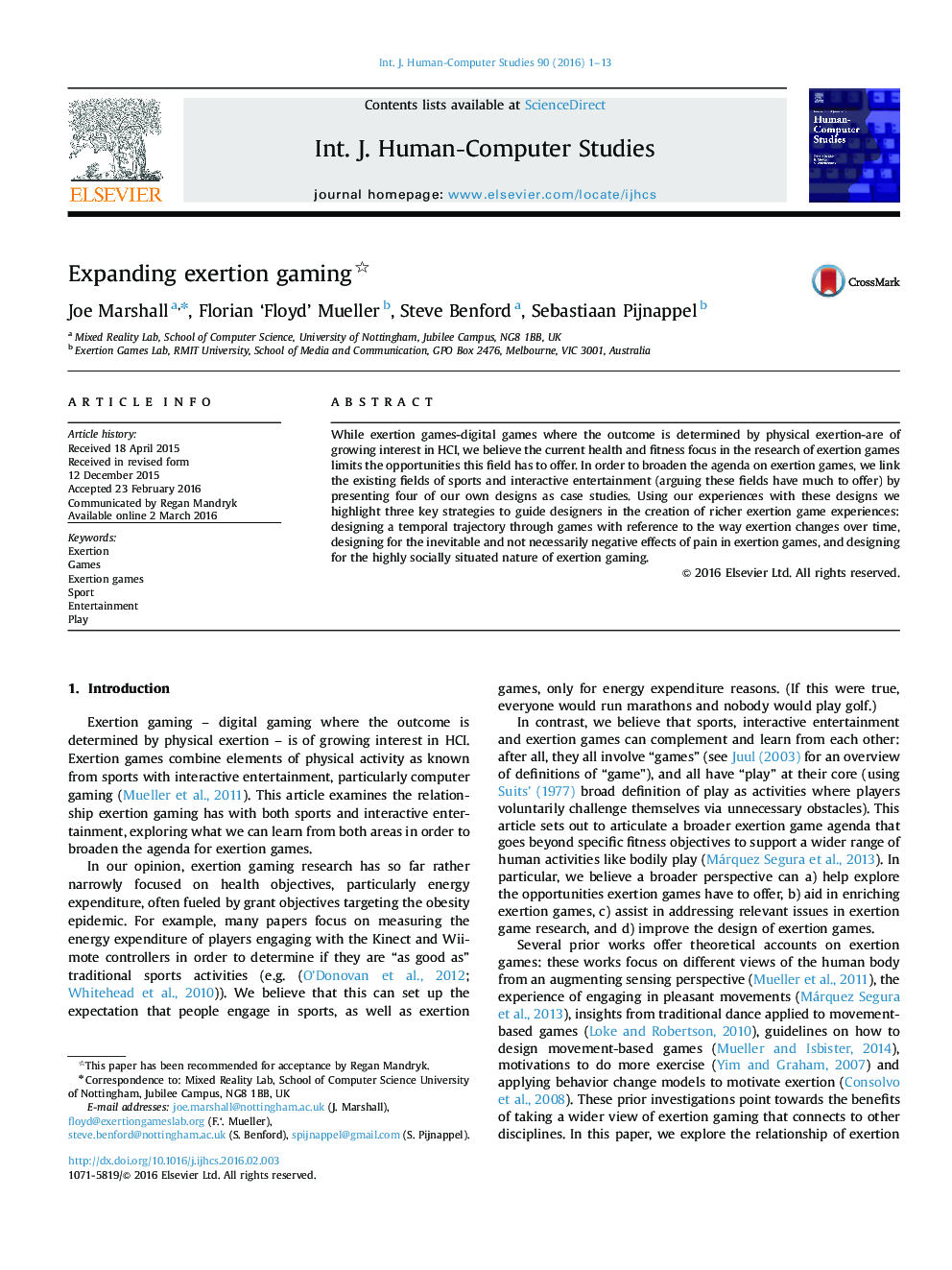| Article ID | Journal | Published Year | Pages | File Type |
|---|---|---|---|---|
| 400829 | International Journal of Human-Computer Studies | 2016 | 13 Pages |
•Over-focus on health outcomes may lead to a narrow focus in exertion game design.•Exertion game designers can learn from sports and entertainment to make better games.•4 case studies of our sports and entertainment inspired exertion games.•From these we present 3 design strategies for the creation of exertion games.•(1) Design exertion trajectories (2) use pain (3) work with the social nature of exertion.
While exertion games-digital games where the outcome is determined by physical exertion-are of growing interest in HCI, we believe the current health and fitness focus in the research of exertion games limits the opportunities this field has to offer. In order to broaden the agenda on exertion games, we link the existing fields of sports and interactive entertainment (arguing these fields have much to offer) by presenting four of our own designs as case studies. Using our experiences with these designs we highlight three key strategies to guide designers in the creation of richer exertion game experiences: designing a temporal trajectory through games with reference to the way exertion changes over time, designing for the inevitable and not necessarily negative effects of pain in exertion games, and designing for the highly socially situated nature of exertion gaming.
